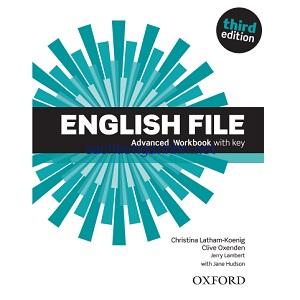New English File Beginner Vocabulary Pdf

Introduction to Modern Literary Theory Dr. Kristi Siegel Associate Professor, English Dept. Director, English Graduate Program Chair - Languages, Literature, and Communication Division Mount Mary College 2900 North Menomonee River Pkwy Milwaukee, WI 53222 (414) 258-4810, ext.
287 Introduction to Modern Literary Theory Literary Trends and Influences* * Disclaimer: When theories are explained briefly, a necessary reduction in their complexity and richness occurs. The information below is meant merely as a guide or introduction to modern literary theories and trends. Please note: Site is in the process of being updated and expanded - January 2006. Links to Critical/Theoretical Approaches: • • • • • • • • • • • • • • • • • • • • New Criticism A literary movement that started in the late 1920s and 1930s and originated in reaction to traditional criticism that new critics saw as largely concerned with matters extraneous to the text, e.g., with the biography or psychology of the author or the work's relationship to literary history.
New Criticism proposed that a work of literary art should be regarded as autonomous, and so should not be judged by reference to considerations beyond itself. A poem consists less of a series of referential and verifiable statements about the 'real' world beyond it, than of the presentation and sophisticated organization of a set of complex experiences in a verbal form (Hawkes, pp. Major figures of New Criticism include I. Eliot, Cleanth Brooks, David Daiches, William Empson, Murray Krieger, John Crowe Ransom, Allen Tate, F. Leavis, Robert Penn Warren, W. Blackmur, Rene Wellek, Ausin Warren, and Ivor Winters. Key Terms: Intentional Fallacy - equating the meaning of a poem with the author's intentions.
Affective Fallacy - confusing the meaning of a text with how it makes the reader feel. A reader's emotional response to a text generally does not produce a reliable interpretation. Heresy of Paraphrase - assuming that an interpretation of a literary work could consist of a detailed summary or paraphrase. Close reading (from Bressler - see General Resources below) - 'a close and detailed analysis of the text itself to arrive at an interpretation without referring to historical, authorial, or cultural concerns' (263).
Lara Storton. This Test Booklet contains: ○ an Entry test. ○ tests for each File, in A and B versions. Grammar, Vocabulary, and Pronunciation. Reading and Writing. Listening and Speaking. ○ an extended End-of-course test, in A and B versions. ENGLISH FILE Intermediate. Test Booklet. DO NEF Int tst bklt. End-of-course Test Grammar, Vocabulary. Pronunciation, and Practical English A. ENGLISH FILE. 2 Put the words in the correct order to make. 5 Danielle is wearing a nice, long green sk___________ and a white T-shirt today. Places and travel. 6 A E______ me. What time do we arrive in.
Further references: • Brooks, Cleanth. The Well-Wrought Urn. New York: Reynal & Hitchcock, 1947. • Brooks, Cleanth and Robert Penn Warren, eds. Understanding Poetry. New York: Holt, 1938. • Empson, William.
Seven Types of Ambiguity. New York, 1955.
• Lentriccia, Frank. After the New Criticism. See chapter 6. • Eagleton, Terry.
Literary Theory: An Introduction. See chapter 1.
• Jefferson, Anne and David Robey. Modern Literary Theory: A Comparative Introduction.
See chapter 3. • Ransom, John Crowe. The New Criticism.
New York: New Directions, 1941. • Richards, I. Practical Criticism. London: Routledge & Paul, 1964.
• Wimsatt, W. K., and Monroe C.
The Verbal Icon. Angry Gran Run Free Download For Windows Xp. Lexington: U of Kentucky P, 1954. Powerdvd 14 Ultra Free Download Full Version With Crack.
• Winters, Ivor. In Defense of Reason.
Denver: Swallow P, 1947. • See also the works of Robert D. Denham, John Fekete, and William J. Suggested Websites: • • Archetypal/Myth Criticism A form of criticism based largely on the works of C. Jung (YOONG) and Joseph Campbell (and myth itself). Some of the school's major figures include Robert Graves, Francis Fergusson, Philip Wheelwright, Leslie Fiedler, Northrop Frye, Maud Bodkin, and G.
Wilson Knight. These critics view the genres and individual plot patterns of literature, including highly sophisticated and realistic works, as recurrences of certain archetypes and essential mythic formulae.
Archetypes, according to Jung, are 'primordial images'; the 'psychic residue' of repeated types of experience in the lives of very ancient ancestors which are inherited in the 'collective unconscious' of the human race and are expressed in myths, religion, dreams, and private fantasies, as well as in the works of literature (Abrams, p. Some common examples of archetypes include water, sun, moon, colors, circles, the Great Mother, Wise Old Man, etc. In terms of archetypal criticism, the color white might be associated with innocence or could signify death or the supernatural. Key Terms: Anima - feminine aspect - the inner feminine part of the male personality or a man's image of a woman.